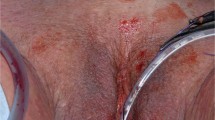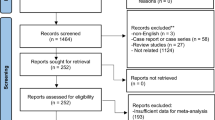Abstract
Objective: We prospectively analyzed the dose dependent outcome and side effects of neurogenic bladder patients with intravesical application of oxybutynin at our centre.
Materials and methods: We examined the data of 32 patients with neurogenic bladders and detrusor hyperreflexia. We registered clinical outcome, continence situation, side effects and urodynamic data of patients with (A) standard dosages of intravesical oxybutynin (0.3 mg/kg bodyweight per day) and (B) with increasing dosages in steps of 0.2 mg/kg bodyweight per day up to 0.9 mg/kg bodyweight per day.
Results: We examined 32 patients aged 1 to 34 years, mean age 12 years. 21/32 patients became totally continent with the dosage (A). They showed a significant (P<0.01) decrease in the median max detrusor pressure (MDP) and a significant (P<0.01) increase in the median compliance and the median age adjusted bladder capacity (AABC). Eleven out of 32 patients remained incontinent under this dosage (A). Their median MDP, their median compliance and their median AABC remained nearly unchanged. Seven out of 11 incontinent patients under dosage (A) were treated efficiently with the higher dosages (B). Their median necessary dosage escalation to achieve treatment success was 0.7 mg/kg bodyweight per day (range 0.5 to 0.9 mg/kg bodyweight per day). Their median MDP was significantly (P<0.05) decreased and their median compliance and median AABC were significantly (P<0.05) increased. Four out of 11 patients remained incontinent and showed only little improvement in urodynamic data. Two out of 11 patients with the dosage escalation (B) showed side effects at a dosage of 0.9 mg/kg bodyweight per day.
Conclusions: The intravesical application of oxybutynin was a well tolerated and efficacious therapy. The topical oxybutynin therapy dosage (A) was efficient in 66% of our selected patients, the escalating dosage titration (B) could increase the efficiency to 87%.
Spinal Cord (2000) 38, 250–254.
Similar content being viewed by others
Article PDF
Author information
Authors and Affiliations
Additional information
This paper was presented in part at the World Endourology Congress in New York in September 1998
Rights and permissions
About this article
Cite this article
Haferkamp, A., Staehler, G., Gerner, H. et al. Dosage escalation of intravesical oxybutynin in the treatment of neurogenic bladder patients. Spinal Cord 38, 250–254 (2000). https://doi.org/10.1038/sj.sc.3100995
Published:
Issue date:
DOI: https://doi.org/10.1038/sj.sc.3100995
Keywords
This article is cited by
-
Treating Lower Urinary Tract Symptoms in Older Adults: Intravesical Options
Drugs & Aging (2023)
-
Intravesical oxybutynin therapy for patients with neurogenic detrusor overactivity: a systematic review and meta-analysis
International Urology and Nephrology (2022)
-
The Management of Lower Urinary Tract Dysfunction in Multiple Sclerosis
Current Neurology and Neuroscience Reports (2018)
-
An integrative review of standardized clinical evaluation tool utilization in anticholinergic drug trials for neurogenic lower urinary tract dysfunction
Spinal Cord (2016)
-
Neurogene Blasenfunktionsstörungen bei Patienten mit Meningomyelozele
Der Urologe (2015)



